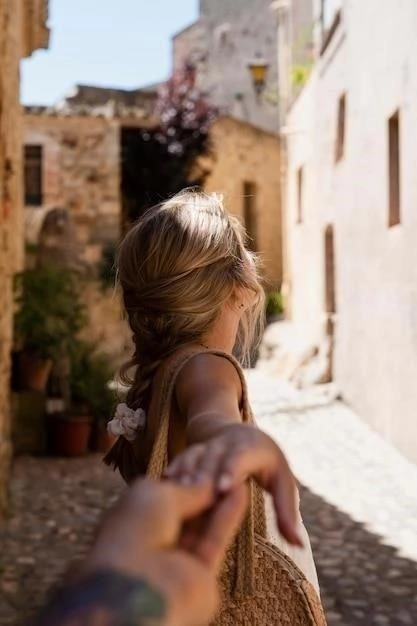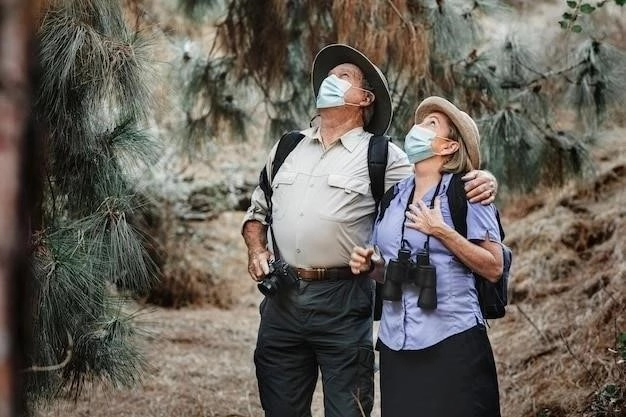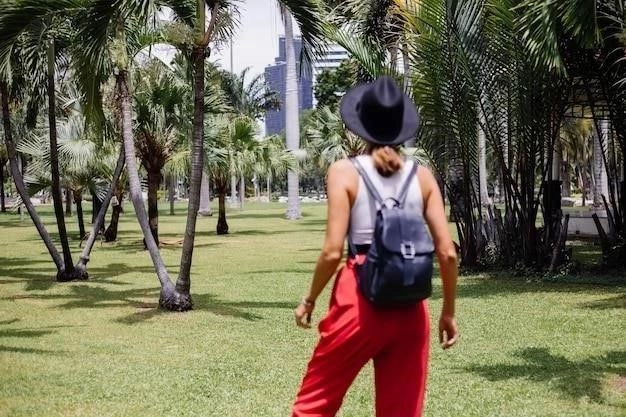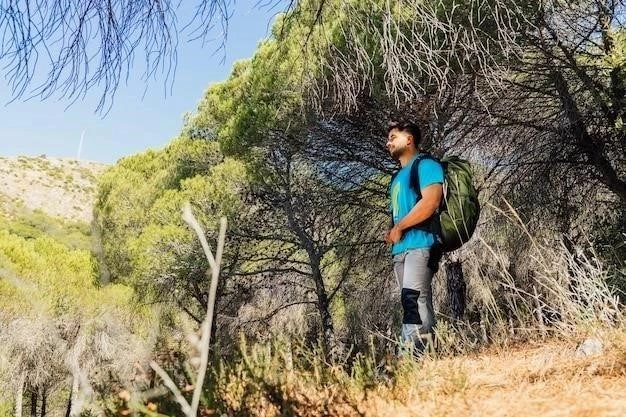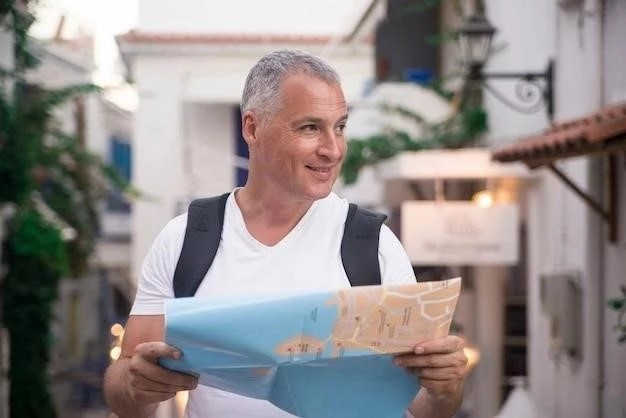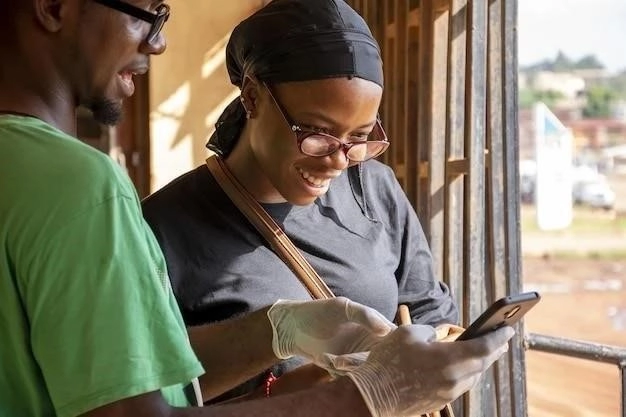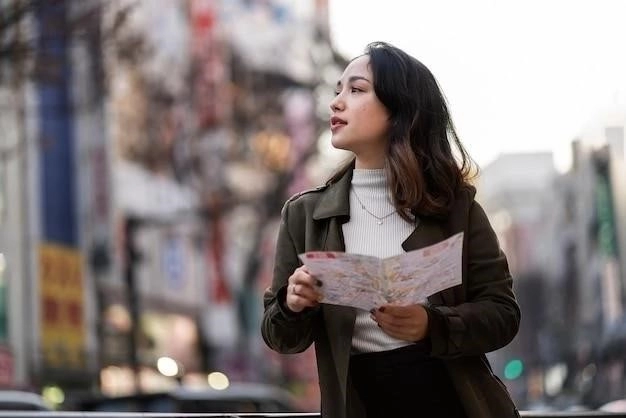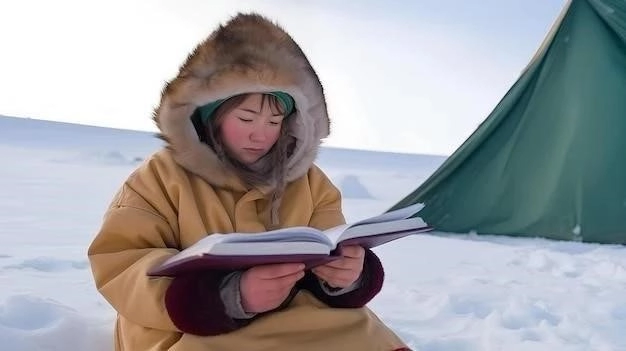Kosovo, a small nation in the Balkans, offers a captivating blend of history, culture, and natural beauty. Explore ancient monasteries, vibrant cities like Pristina and Prizren, and stunning landscapes, including the Rugova Gorge and the Šar Mountains. Discover the warmth of Kosovar hospitality and savor delicious traditional cuisine.
Planning Your Trip
Embarking on a journey to Kosovo requires careful planning to ensure a smooth and rewarding experience. Begin by determining the purpose of your visit, whether it’s to delve into the country’s rich history, immerse yourself in its vibrant culture, or explore its breathtaking natural landscapes. This will help you tailor your itinerary and allocate sufficient time for each destination.
Next, research the best time to visit Kosovo based on your preferences. Spring and autumn offer pleasant weather with mild temperatures, ideal for outdoor activities and sightseeing. Summer brings warm weather and is perfect for exploring the mountains and lakes. Winter, though cold, provides opportunities for skiing and experiencing the country’s cozy atmosphere.

Consider the duration of your trip and prioritize the attractions and experiences that align with your interests. Whether it’s exploring historical sites like the Prizren Fortress and Gračanica Monastery, immersing yourself in the bustling capital city of Pristina, or venturing into the Accursed Mountains for hiking and breathtaking views, Kosovo offers something for everyone.
Once you have a rough itinerary in mind, research transportation options. Pristina International Airport (PRN) serves as the main gateway to the country, with flights connecting to major European cities. Within Kosovo, buses are a reliable and affordable mode of transportation, while car rentals offer greater flexibility for exploring remote areas.

Finally, familiarize yourself with local customs and etiquette. While Kosovo is a welcoming and hospitable country, respecting local traditions will enhance your interactions and create a more meaningful experience.

Visas & Entry Requirements
Before embarking on your journey to Kosovo, it is essential to ensure you possess the necessary documentation for entry. Citizens of certain countries are granted visa-free access for a specified period, typically 90 days, while others are required to obtain a visa prior to arrival.
To determine the specific visa requirements for your nationality, it is advisable to consult with the Embassy or Consulate of Kosovo in your home country. They can provide the most up-to-date information and guide you through the application process, if necessary. It is crucial to initiate this process well in advance of your intended travel dates to allow ample time for processing.
Generally, a valid passport with at least six months of remaining validity from your date of entry is required for all visitors. Additionally, you may be asked to provide proof of onward travel arrangements, such as a return ticket or itinerary, as well as evidence of sufficient financial means to support your stay.
Furthermore, it is essential to note that entry into Kosovo from Serbia is a sensitive matter due to ongoing political complexities. While direct travel between the two countries is possible, it is advisable to research the latest regulations and border crossing procedures carefully.
By ensuring you meet all the necessary visa and entry requirements, you can embark on your Kosovo adventure with peace of mind, knowing that your entry into the country will be smooth and hassle-free.
Currency & Money Exchange
In Kosovo, the official currency is the euro (€), even though it is not officially part of the eurozone. This makes financial transactions relatively convenient for travelers, as the euro is a widely recognized and accepted currency. You can easily exchange your home currency for euros upon arrival at Pristina International Airport (PRN) or at various banks and exchange bureaus throughout the country.
When exchanging currency, it’s advisable to compare rates from different providers to ensure you are getting a fair deal. Banks generally offer better exchange rates than airport kiosks or hotels. However, they may have less convenient operating hours. It’s a good idea to have some local currency on hand for immediate expenses upon arrival, such as transportation or snacks.
Credit cards, particularly Visa and Mastercard, are widely accepted in major cities and towns, including restaurants, hotels, and shops. However, it’s wise to carry some cash, especially when venturing into smaller towns or rural areas, where card acceptance may be limited.
ATMs are readily available throughout Kosovo, providing a convenient way to withdraw cash. It’s advisable to inform your bank of your travel plans to avoid any issues with card usage abroad. Familiarize yourself with any potential foreign transaction fees or charges associated with using your card in Kosovo.
By understanding the currency and money exchange practices in Kosovo, you can manage your finances effectively and ensure a smooth and enjoyable travel experience.
Best Time to Visit
Kosovo, with its continental climate, experiences distinct seasons, each offering a unique charm and travel opportunities. Choosing the ideal time to visit depends largely on your personal preferences and the experiences you seek.
Spring (April-May) and autumn (September-October) are considered shoulder seasons and are often hailed as the best times to visit Kosovo. During these months, the weather is pleasantly mild, with comfortable temperatures for outdoor exploration. The landscapes transform into a vibrant tapestry of colors, with wildflowers blooming in spring and foliage turning golden in autumn.
Summer (June-August) brings warm, sunny weather, ideal for hiking in the Accursed Mountains, exploring the Rugova Gorge, or relaxing by the lakes. However, it’s worth noting that temperatures can soar during peak summer, so packing light clothing and staying hydrated is essential.
Winter (November-March) blankets Kosovo in snow, transforming the country into a winter wonderland. While temperatures can drop significantly, winter offers opportunities for skiing and snowboarding enthusiasts, with ski resorts like Brezovica attracting visitors.

Consider your priorities when deciding on the best time to visit. If you prefer pleasant weather and fewer crowds, spring and autumn are ideal. If you seek outdoor adventures in warmer temperatures, summer is suitable. And if you’re a winter sports enthusiast, embrace the snowy landscapes of winter.
Getting There & Around
Reaching Kosovo and navigating within the country is relatively straightforward, with various transportation options available to suit different preferences and budgets.
Pristina International Airport (PRN), located just outside the capital city, serves as the main gateway to Kosovo. Numerous airlines offer direct and connecting flights from major cities across Europe and beyond. Once you arrive at the airport, you can easily find taxis or pre-booked airport transfers to take you to your destination.
For those traveling by land, Kosovo shares borders with Albania, North Macedonia, Montenegro, and Serbia. Buses are a popular mode of transport for both domestic and international travel, offering regular connections to neighboring countries and major cities within Kosovo.

While Kosovo has a developing road network, renting a car provides greater flexibility for exploring the country at your own pace, especially if you plan on venturing off the beaten path. Several international and local car rental companies operate in Kosovo, with offices at the airport and in major cities.
Within cities and towns, taxis are readily available and an affordable way to get around. It’s advisable to negotiate the fare in advance or ensure the taxi uses a meter to avoid any misunderstandings. Local buses also operate within and between cities, offering a budget-friendly option, though they can be crowded at times.
By considering these various transportation options, you can navigate Kosovo with ease, ensuring a seamless and enjoyable travel experience.
Accommodation
Kosovo offers a diverse range of accommodation options to suit various budgets and preferences, from budget-friendly hostels to luxurious hotels. Whether you’re seeking a central location in the heart of the city or a tranquil retreat in the countryside, you’ll find a comfortable and welcoming place to stay.
In Pristina, the capital city, you’ll find a concentration of hotels, ranging from international chains to locally owned boutique hotels. These establishments often offer modern amenities, comfortable rooms, and convenient access to the city’s attractions, restaurants, and nightlife.
For a more authentic experience, consider staying in traditional guesthouses or family-run hotels, particularly in smaller towns and villages. These accommodations offer a glimpse into local life and provide opportunities to interact with friendly locals and savor homemade meals.
If you’re traveling on a budget, hostels are a great option, providing affordable dormitory-style or private rooms. These social accommodations are ideal for meeting fellow travelers and often organize group activities and excursions.
For those seeking a more secluded and scenic retreat, consider staying in guesthouses or apartments nestled in the mountains or countryside. These accommodations offer breathtaking views, tranquility, and opportunities for hiking, nature walks, and exploring rural Kosovo.
When choosing your accommodation, consider factors such as location, budget, desired amenities, and the overall ambiance you’re seeking. Booking in advance, especially during peak season, is highly recommended to secure your preferred choice.
Where to Stay in Pristina
Pristina, Kosovo’s vibrant capital, offers a range of accommodation options catering to diverse tastes and budgets. When choosing where to stay, consider the proximity to key attractions, dining options, and transportation hubs.
The city center, with its bustling atmosphere and pedestrian-friendly streets, is a popular choice for travelers. Here, you’ll find a concentration of hotels, ranging from international chains like the Emerald Hotel and the Swiss Diamond Hotel Pristina to charming boutique hotels such as the Hotel Gracanica and the Hotel Parlament.
For a more local experience, consider staying in the neighborhood of Ulpiana, known for its traditional houses and cozy guesthouses. This area offers a quieter ambiance while still being within walking distance of the city center.
If you’re on a budget, the area around the University of Pristina offers a good selection of affordable hostels and guesthouses. This vibrant neighborhood is popular with students and young travelers, with a lively atmosphere and numerous cafes and bars.
For those seeking a more luxurious stay, the outskirts of Pristina offer a selection of upscale hotels and resorts with amenities like swimming pools, spas, and fine-dining restaurants.
Regardless of your budget or preferences, Pristina has an array of accommodation options to ensure a comfortable and memorable stay.

Where to Stay in Prizren
Nestled in the picturesque valley of the Šar Mountains, Prizren is a captivating city renowned for its Ottoman-era architecture, historical landmarks, and vibrant cultural scene. When selecting accommodation in Prizren, consider the proximity to the city’s main attractions, the ambiance of the neighborhood, and your budget.
The heart of Prizren’s historic center, known as the “Old Town,” is a charming and atmospheric area brimming with cobblestone streets, traditional houses, and bustling markets. Staying here will immerse you in the city’s rich history and provide easy access to iconic landmarks such as the Prizren Fortress, the Sinan Pasha Mosque, and the Stone Bridge. Boutique hotels like Hotel Kacinari and Hotel Prizreni offer a blend of modern comfort and traditional charm in this central location.
For a more tranquil setting, consider staying near the Lumbardhi River, which meanders through the city. Guesthouses and apartments along the riverbank offer scenic views and a peaceful ambiance. Hotel Tiffany and Hotel Millenium are excellent choices in this area, providing comfortable accommodations and easy access to riverside promenades and restaurants.
Prizren also caters to budget-conscious travelers with a selection of hostels and guesthouses offering affordable dormitory-style or private rooms. Hostel Prizren and Driza’s House are popular options among backpackers and those seeking a social and budget-friendly stay.
Whether you prefer the historical charm of the Old Town, the tranquility of the riverbank, or the budget-friendly options, Prizren has accommodation to suit every traveler’s needs.
Top Attractions
Kosovo, a landlocked nation in the Balkans, boasts a captivating tapestry of historical treasures, cultural landmarks, and scenic wonders. From ancient monasteries to vibrant cities and breathtaking natural landscapes, Kosovo offers a wealth of attractions to explore.
For history enthusiasts, the UNESCO-listed medieval monasteries of Visoki Dečani and Gračanica are must-visits. These architectural marvels showcase stunning frescoes, intricate carvings, and a rich spiritual heritage. The Prizren Fortress, perched atop a hill overlooking the city, offers panoramic views and a glimpse into Kosovo’s Ottoman past.
Pristina, the bustling capital city, pulsates with a youthful energy and a blend of modern and traditional influences. Explore the iconic Newborn Monument, a symbol of Kosovo’s independence, and wander through the bustling streets of the old town, where you’ll find charming cafes, vibrant markets, and historical mosques.
Nature lovers will be captivated by the raw beauty of the Accursed Mountains, offering challenging hikes, breathtaking vistas, and picturesque alpine lakes. The Rugova Gorge, carved by the Lumbardhi River, is a hiker’s paradise, with towering cliffs, cascading waterfalls, and lush forests.
These are just a few of the many attractions that await exploration in Kosovo. Whether you’re drawn to history, culture, or natural beauty, Kosovo’s diverse offerings are sure to leave a lasting impression.
Prizren Fortress
Perched majestically on a hill overlooking the enchanting city of Prizren, the Prizren Fortress stands as a testament to Kosovo’s rich and tumultuous history. This imposing medieval fortress, dating back to the 11th century, has witnessed the rise and fall of empires, serving as a strategic stronghold for various rulers throughout the centuries.
A visit to the Prizren Fortress is an immersive journey through time. As you ascend the winding path leading to the fortress gates, you’ll be treated to breathtaking panoramic views of the city below, with its terracotta rooftops, minarets piercing the sky, and the meandering Lumbardhi River.
Once inside the fortress walls, you can explore the remnants of its turbulent past, including crumbling ramparts, watchtowers offering sweeping vistas, and underground tunnels that once served as secret passages. The fortress also houses a small museum where you can delve deeper into its history and significance.
As the sun begins to set, casting a golden glow over Prizren, the fortress transforms into a magical setting. It’s the perfect time to capture stunning photographs, soak in the romantic ambiance, and reflect on the centuries of history that have unfolded within its ancient walls.
Visoki Dečani Monastery
Nestled amidst the serene landscapes of western Kosovo, the Visoki Dečani Monastery stands as a beacon of Serbian Orthodox spirituality and a testament to the enduring power of faith. This UNESCO World Heritage site, founded in the 14th century by Serbian King Stefan Dečanski, is renowned for its exceptional architectural grandeur, exquisite frescoes, and profound historical significance.
Approaching the monastery, one is struck by its imposing presence, with its fortified walls and towering bell tower standing guard over the surrounding valley. Stepping inside the monastery’s walls is like entering a sanctuary of peace and tranquility. The air is thick with the scent of incense, and the only sounds that break the silence are the soft footsteps of monks and the gentle chanting of prayers.
The monastery’s interior is a treasure trove of Byzantine art, adorned with over 1,000 exquisitely preserved frescoes depicting scenes from the Bible, the lives of saints, and Serbian history. These masterpieces, created by some of the most skilled artists of the era, offer a glimpse into the rich artistic traditions of medieval Serbia.
A visit to Visoki Dečani Monastery is a deeply moving experience, offering a glimpse into Kosovo’s complex history, the enduring power of faith, and the transcendent beauty of Byzantine art.

Gračanica Monastery
In the heart of Kosovo, just outside the bustling capital city of Pristina, lies the serene and spiritually charged Gračanica Monastery. This UNESCO World Heritage site stands as a testament to the enduring legacy of Serbian Orthodox Christianity in the region, captivating visitors with its architectural splendor, vibrant frescoes, and aura of tranquility.
Founded in the 14th century by Serbian King Stefan Milutin, Gračanica Monastery has witnessed centuries of history, enduring periods of both peace and turmoil. Its distinctive five-domed architecture, a hallmark of Serbian medieval architecture, is a sight to behold, with its soaring arches, intricate stonework, and terracotta-tiled roofs.
Stepping inside the monastery walls is like entering another world, one steeped in history, faith, and artistic brilliance. The interior is adorned with a breathtaking ensemble of frescoes, renowned for their vivid colors, expressive figures, and masterful storytelling. These masterpieces depict scenes from the life of Christ, the Virgin Mary, and various saints, offering a glimpse into the religious beliefs and artistic traditions of medieval Serbia.
Today, Gračanica Monastery remains an active place of worship, its serene atmosphere and spiritual significance drawing pilgrims and visitors alike. A visit to this sacred site is a journey for the soul, offering a moment of peace, reflection, and appreciation for the enduring power of faith and art.
National Park Bjeshkët E Nemuna
In the western reaches of Kosovo, bordering Montenegro and Albania, lies a realm of pristine wilderness known as National Park Bjeshkët E Nemuna, also known as the Accursed Mountains. This sprawling national park, encompassing over 63,000 hectares of breathtaking alpine landscapes, is a paradise for nature enthusiasts, adventurers, and those seeking solace in the embrace of unspoiled nature.
Bjeshkët E Nemuna is a world of towering peaks, sculpted by ancient glaciers, their rugged slopes cloaked in dense forests of pine, beech, and juniper. Crystal-clear glacial lakes, reflecting the azure sky, dot the landscape, their tranquil waters home to a variety of fish species.
The park offers a plethora of opportunities for outdoor recreation. Hiking trails wind their way through verdant valleys, leading to panoramic viewpoints, cascading waterfalls, and hidden glacial cirques. Mountaineers can challenge themselves with ascents of the park’s numerous peaks, while rock climbers will find ample opportunities to test their skills on the park’s limestone cliffs.
Whether you seek adventure, solitude, or simply a chance to connect with nature in its rawest form, National Park Bjeshkët E Nemuna is a destination that will captivate your senses and leave a lasting impression.
Ethnographic Museum (Muzeu Etnologjik)
Nestled in the heart of Pristina’s old town, the Ethnographic Museum (Muzeu Etnologjik) offers a captivating glimpse into the rich cultural heritage and traditional way of life in Kosovo. Housed within a beautifully preserved Ottoman-era mansion, known as the Emin Gjiku Complex, the museum presents a fascinating journey through time, showcasing the customs, crafts, and everyday objects that have shaped Kosovar identity.
The museum’s collection is a testament to the country’s diverse cultural influences, reflecting centuries of Ottoman rule, Albanian traditions, and Balkan heritage. As you wander through the museum’s intricately decorated rooms, you’ll encounter a fascinating array of artifacts, including traditional clothing, intricately woven textiles, hand-crafted jewelry, agricultural tools, and household items.
One of the highlights of the museum is its collection of traditional costumes, showcasing the elaborate embroidery, vibrant colors, and unique styles that represent different regions and communities within Kosovo. You’ll also find exhibits dedicated to traditional crafts, such as woodworking, pottery, and metalworking, providing insights into the skills and artistry passed down through generations.
A visit to the Ethnographic Museum is an immersive and enriching experience, offering a deeper understanding of Kosovo’s cultural tapestry and the traditions that continue to shape the nation’s identity today.
NEWBORN Monument
In the heart of Kosovo’s capital city, Pristina, stands a bold and evocative symbol of the nation’s hard-won independence: the NEWBORN Monument. Unveiled in 2008 to commemorate Kosovo’s declaration of independence, this iconic monument has become a must-visit destination for visitors from around the globe, representing hope, resilience, and the promise of a brighter future.
The monument itself is a striking sight, consisting of seven large, bold, capital letters spelling out the word “NEWBORN.” Crafted from sturdy steel and painted a vibrant yellow, the letters stand tall and proud, symbolizing the birth of a new nation.
But the NEWBORN Monument is more than just a static structure; it’s a living, breathing embodiment of Kosovo’s spirit. Each year on Kosovo’s Independence Day, February 17th, the monument is repainted with a different design, often reflecting current events, social issues, or expressions of national pride.
A visit to the NEWBORN Monument is an opportunity to reflect on Kosovo’s journey to independence, to celebrate the nation’s resilience, and to witness the power of art to inspire and unite.

